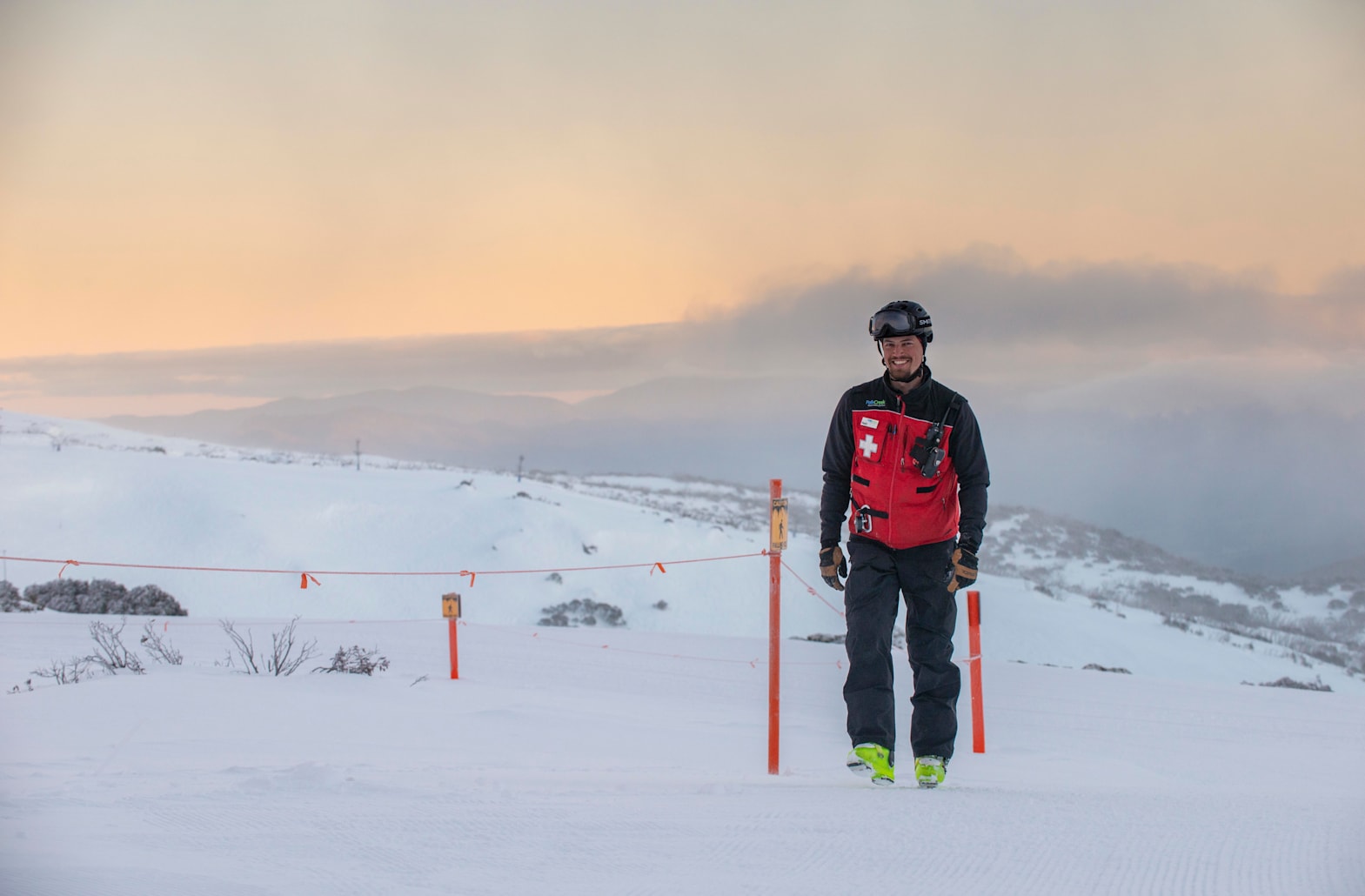Wrist sprains, knee strains, sudden collisions.
Most snow injuries have one thing in common: they are preventable.
Whether you’re carving up blue runs or clipping into skis for the first time, Falls Creek Ski Patrol wants guests to be aware of the most common mistakes they see on the slopes and how to avoid them.
“Many injuries happen when people go too fast for the conditions, stop in blind spots, or simply are not aware of those around them,” says Falls Creek Ski Patrol.
“They might seem minor, like a twisted knee or a bruised wrist, but they can still cut a snow trip short.”
Incidents are most common in busy zones such as beginner runs, intersections and terrain parks.
Knowing when and where to be extra cautious makes all the difference.
“One of the most important things people can do is stay in control and be able to stop to avoid others," says Falls Creek Ski Patrol.
"That alone could prevent a huge number of accidents.”
Skiing or riding within your ability is essential, particularly when slopes are crowded.
“Pushing beyond your limits puts you and everyone around you at risk," the patrol says.
"It is about having fun, but also being smart.”
Falls Creek Ski Patrol also encourages a few simple habits that can greatly improve safety.
Take breaks. Stay hydrated. Dress in layers.
Never stop where you can’t be seen from above.
“And, if you are new to snow sports, take a lesson," the patrol says.
"It helps with confidence, control, and overall enjoyment.”
Good gear also goes hand in hand with safe riding.
“Helmets play a big role in reducing head injuries, and gear that fits well, like boots and bindings, can help prevent both falls and cold-related issues,” the patrol says.
Fatigue is another factor that is often overlooked but a major contributor to late-day injuries.
“Reflexes slow down and awareness drops," the patrol says.
"That is when we tend to see more callouts.
"Listen to your body and know when it is time to head in.”
Lastly, if you witness an incident, do not move the injured person unless they are in immediate danger.
“Mark the area above with crossed skis or a snowboard, and alert ski patrol on (03) 5758 3502 or speak to a lift operator," the patrol says.
"Stay with them if you can until help arrives.”
In the end, staying safe on the slopes is simple if you, “Know your limits, follow the Alpine Responsibility Code, and ask questions if you are unsure. We’re here to help keep your day safe and memorable.”
Learn more about snow safety and the Alpine Responsibility Code at www.snowsafe.org.au.










